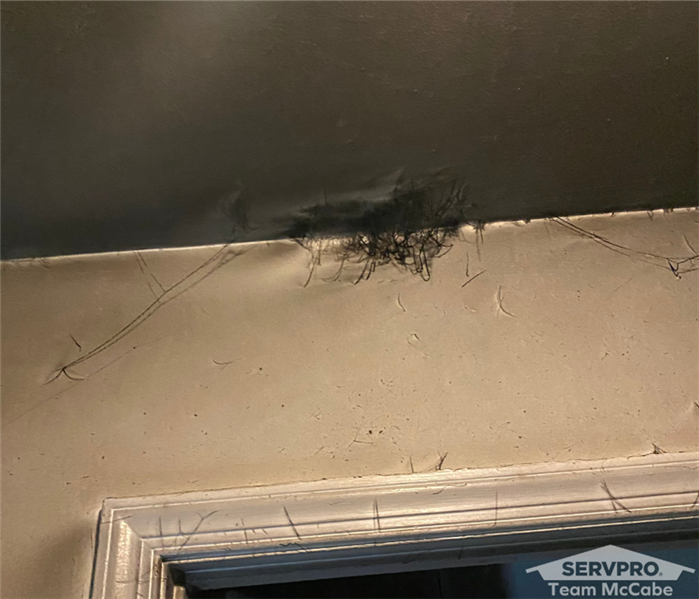Winter Fireplace Safety Tips from SERVPRO
11/5/2024 (Permalink)
 These aren’t your everyday cobwebs – they’re soot webs left behind after a fire. Got a job that’s more than dust and cobwebs? We’re here to help!
These aren’t your everyday cobwebs – they’re soot webs left behind after a fire. Got a job that’s more than dust and cobwebs? We’re here to help!
As winter approaches, gathering around the fireplace becomes a cherished way to stay warm and enjoy time with loved ones. To ensure the safety of you and your family, follow these essential steps before lighting a fire this season.
Have Your Fireplace Professionally Cleaned
According to the National Fire Protection Association, chimneys should be swept at least once a year by a professional cleaning service. This cleaning removes dangerous creosote buildup, preventing potential chimney fires and improving overall air quality.Always Cap Your Chimney
A chimney cap prevents rain, debris, and even animals from entering your fireplace, reducing risks of blockages that can lead to smoke backup or puffbacks. Puffbacks—backfires caused by trapped fumes—can send soot and smoke into your home, so this preventive measure is essential.Burn Seasoned Wood Only
Only use seasoned wood for a safer, cleaner burn. Unseasoned wood generates more smoke, leading to greater soot buildup and creating a risk of soot cobwebs, which form when soot particles collect on ceilings and corners near the fireplace. For guidance on wood selection, visit the Chimney Safety Institute of America website.Use a Small Amount of Wood
Burning a smaller amount of wood creates less smoke, which is healthier for your family and reduces buildup in the chimney. Less smoke also helps prevent soot cobwebs from forming around your fireplace.Place Wood on a Metal Grate
Setting logs on a metal grate allows air to circulate around them, improving combustion and minimizing smoke output.Use a Fireplace Guard
Install a guard on both sides of the fireplace to prevent sparks from escaping, which protects both people and nearby appliances from potential harm.Extinguish the Fire Safely
After the fire dies down, bury the remaining embers under ashes and pour sand over them to ensure the fire is fully out. This minimizes the risk of stray embers causing accidental flames.
Types of Chimney Fires
Free-Burning Fires: Characterized by loud, intense flames and visible smoke exiting from the chimney top.
Slow-Burning Fires: These fires burn at high temperatures but are much quieter than free-burning fires, making them easy to overlook. Despite being less noticeable, slow-burning fires are extremely hazardous.
SERVPRO is Here to Help
At SERVPRO of Columbia, Montour & Sullivan Counties, your safety is our top priority. If your home experiences smoke, soot cobwebs, or puffbacks, our team has the expertise to clean and restore affected areas. We hope you enjoy the warmth and comfort of your fireplace this winter, knowing SERVPRO is ready to help if the unexpected occurs. For professional cleanup or restoration services, call us at 570-759-0966.




 24/7 Emergency Service
24/7 Emergency Service